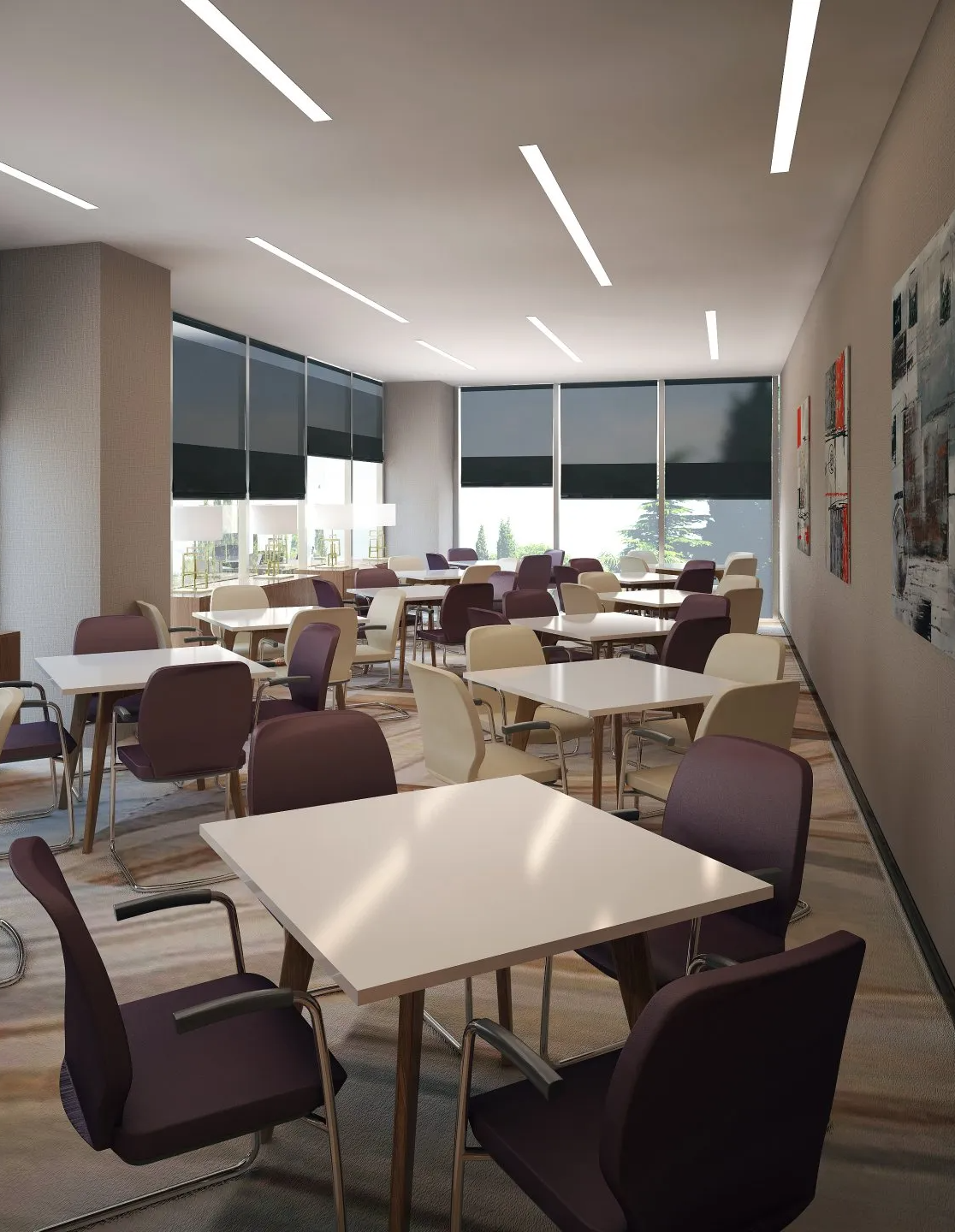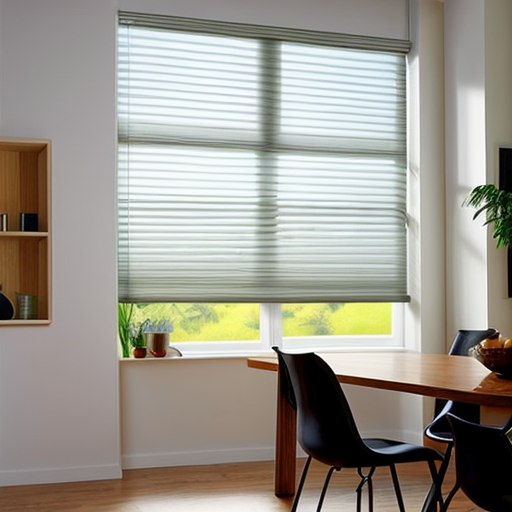Townsville Blinds
Welcome to Townsville Blinds, where style meets functionality, and innovation blends seamlessly with design. Whether you seek privacy, light control, or simply to enhance the aesthetic appeal of your home, our collection of blinds offers a solution for every preference. We invite you to discover the possibilities that await within our selection of blinds, where style and substance converge to redefine your living spaces. Read on below to learn more about our selection of Blinds in Townsville and surrounds.
The fundamental purpose of blinds is to control the amount of light entering a room. Blinds are used to block out the sun, as well as adjust their coverage over windows in order for you to regulate how much sunlight enters your house. Also more importantly, to help with regulating heat inside rooms because they also stop most air conditioning from leaking through them.
Our most popular types of blinds include:
Vertical Blinds
Vertical Blinds are blinds made of elongated vertical panels (also referred to as vanes or slats) and combine the practicality of a blind, with the look of a curtain. They utilise a sliding operation over a connected track to control their coverage on windows. Vertical blinds are able to tilt their panels to open or close, controlling the amount of light they let through. The long panels tend to emphasize the feeling of height and space in a room, making them an excellent choice for coverage of large areas. Their design is perfect for french doors, sliding doors, or wide window openings that need extra protection from the sun's rays, as well as excessive heat or cold.
Vertical blinds are available in a wide range of fabrics, colours, and textures, making them suitable for both residential and commercial spaces. From sleek modern interiors to classic décor, they can be customised to suit any design style. They are especially popular in living rooms, dining areas, and office environments due to their versatility and ease of use.
Low maintenance and easy to clean, vertical blinds are a practical window furnishing solution. The slats can be easily wiped down or replaced individually, which is especially beneficial in high-traffic areas or homes with pets and children. Their adjustable design also improves energy efficiency by managing sunlight and insulation year-round, making vertical blinds a smart and stylish investment.
Roller Blinds
Roller blinds are characterised by a single-piece of fabric fitted on a roller, and are also sometimes referred to as 'shades'. They are a simple design, yet can look very stylish for both modern and traditional settings. Roller Blinds are often used with a blockout layer or sheer curtains; they're perfect for rooms requiring less exposure to sunlight and also more privacy. They are very versatile and suitable for almost all window types, and are available in a wide range of colours, materials and styles.
In addition to their stylish and functional design, roller blinds are known for their durability and ease of use. Made from high-quality materials, they are built to withstand daily use, making them a practical option for high-traffic areas like kitchens, living rooms, and offices. Their smooth rolling mechanism allows you to effortlessly adjust the amount of light entering your space, offering you complete control over brightness and privacy. Roller blinds are also easy to maintain, requiring minimal cleaning to keep them looking fresh. With endless customization options, roller blinds are an excellent investment for any room in your home or office.
Double Roller Blinds
Double roller blinds are essentially two layers of roller blinds, and are also known as dual roller blinds. They provide dual functionality whereby one layer is a sheer sunscreen fabric, designed to let light into the window (without being see through), and the second layer is a blockout fabric layer to block out light and provide complete privacy. The blinds can be operated independently of each other to achieve the level of light vs blockout that you desire. Double roller blinds are extremely functional and are very popular in corporate settings, as well as homes.
Roman Blinds
Roman Blinds are similar to roller shades in that they consist of one piece of fabric, however they are made up of pleated folds when raised instead of being rolled on a cylinder. These folds offer warmth and elegance to a room and give the feeling of a curtain, with the format of a blind. There are two types of Roman Blinds, generally considered 'soft' and 'hard' depending on what material is used. Softer materials usually filter light, letting some light through and are great for loungerooms and kitchen areas. Harder materials are great for 'blockout' functionality, completely blocking out light and are perfect for bedrooms or media rooms. Operationally, Roman Blinds can be fitted with chains to wind them up and down, or chainless operation using a fabric handle situated at the back of the blind.
Honeycomb Blinds
Honeycomb Blinds are constructed using unique horizontal cellular structures, and are also referred to as 'cellular blinds'. They consist of multiple layers of fabric, bonded together to form cells resembling the shape of bees honeycomb, hence their name. The honeycomb shaped cells provide excellent insulation properties and are very energy efficient. They can provide varying levels of insulation which is determined by their one, two, or three layered design, which traps the air in individual cells. As with other blind types, they can be made of materials to let light through, or alternatively to to be a blockout blind. Honeycomb blinds also have the option of bottom up operation, or bottom up/top down whereby they are fixed in the centre so that they can be open at both the top and bottom of the blind.
Venetian Blinds
Venetian Blinds are a practical and durable window covering that come in various materials such as timber, metal, vinyl and PVC, so you are sure to find a finish to suit your individual style. Venetian blinds consist of singular horizontal strips, or slats, which can be tilted to control the amount of light they let into a room. They are perfect for providing privacy, while also allowing the desired light to filter through the blind as required. Interestingly, they originate from the early Venetians who are said to have brought the blind from Persia to Venice. Further, Venetian slaves are said to have brought the blind to France upon obtaining their freedom, and were a means of them maintaining their livelihood.
Panel Blinds
Panel Blinds are often referred to as Panel Glide Blinds and are a more contemporary design based on Vertical Blinds, with a very similar operational style. Panel Blinds are made up of vertical panels which are much wider than traditional vertical blind panels. They use a panel track consisting of channels that can be sized based on the number of panels required. The panels slide horizontally across the tracks making for excellent coverage and are particularly suited for sliding doors or large windows. Panel blinds are usually made of fabric panels and glide smoothly and quietly across their tracks, making them an excellent choice for living areas.
Blockout Blinds
Blockout Blinds also sometimes referred to as black-out blinds, due to their ability to stop all light from entering a room. They are perfect for bedrooms because they stop the sun's sharp rays and also provide insulation. Available in different sizes, colors, and percentages of light blocked out (up to 100%), these come with a variety of perks such as stopping you from being woken up by sunlight or overheating your room during summertime. Stop waking up to bright lights this year, invest in some blockouts!
The best thing about window blinds is that there's no shortage of them on the market. There are so many different styles, colours and shapes to choose from which can make it difficult to pick just one type! Contact us today for a free consultation, measure and quote so that we can create your perfect Window Blind solution.
Back to our
Curtains home page
Frequently asked questions...






